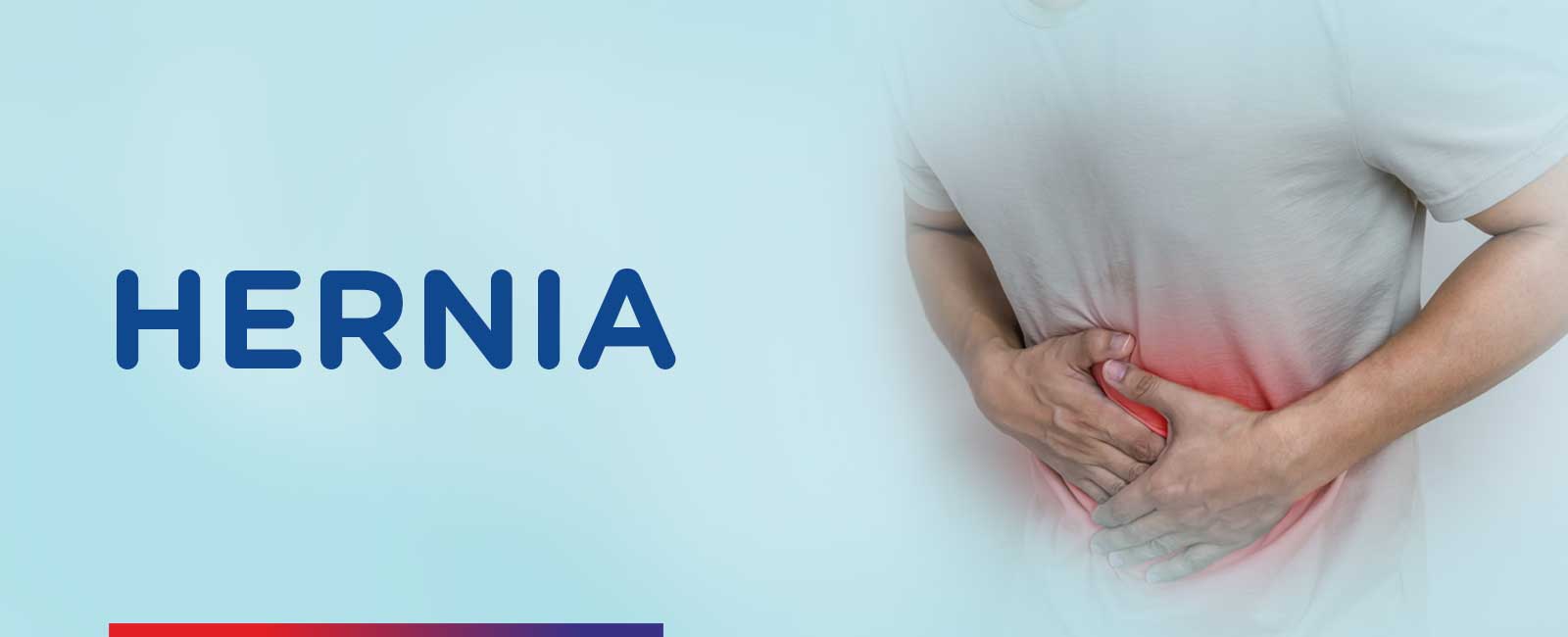
A hernia is basically a weakness or tear in the abdominal muscles that allows organs, such as intestines or fatty tissue, to protrude through the weakened area. This causes a bulge under the skin accompanied with pain and discomfort.
Causes of Hernia
The most common cause of hernia is a defect or weakness in the abdominal wall that was present at birth. The area can be further weakened by age or injury. Additionally, the weakness might occur as a result of a previous surgical incision. Hernias are more common in men but can develop in anyone. Some of the major risk factors are as follows.
- Chronic cough
- Smoking
- Obesity
- Straining while lifting heavy objects
- Straining during bowel movements or urination
- Pregnancy
- Certain medications like steroids
Types of Hernias
All hernias are not created equal. They are characterized by their location in the abdominal wall and occasionally by their specific cause. Based on that there are three common types of hernias.
Inguinal Hernia
This is the most common type of hernia and is more common in the men as compared to women. This is due to a potential weak spot in the groin when a male’s testicles descend during foetal development. An indirect inguinal hernia which is rare is the type of hernia that develops in this weak spot. The hernia may then descend into the scrotum in men or, in women, to the outer folds of the vagina.
Umbilical Hernia
An umbilical hernia occurs in the weakened area of the navel or belly button where the umbilical cord was attached. These are more frequent in children, but are also seen in adults as well.
Incisional Hernia
An incisional hernia as indicated by the name is located at the site of a previous surgical incision. Any previous areas of surgery remain weak throughout the life of the individual and hernias can develop at this site after weeks, months or even years after the initial surgery.
Treatments
Surgical Treatment
Surgical treatment is opted for when the pain and discomfort is increased. Two options for surgical treatment are as follows.
- Open surgery – In this method, the surgeon cuts open the skin and gently pushes back the hernia into its place.
- Laparoscopic surgery – This is actually a minimally invasive surgery. The surgeon makes very small cuts near the hernia. Then with the help of a laparoscope, the surgeon repairs the hernia with mesh. Mesh is a piece of prosthetic material which is inserted through the incision made in the abdomen or groin and sutured into position. The placement of a mesh helps in the reduction tension on the wound and the chance of recurrence of the hernia along with alleviation of pain.
Non Surgical Treatment
As indicated by the name, this treatment procedure does not involve surgery. A temporary relief is provided with the help of wearing a binder, corset or truss which puts gentle pressure on the hernia for keeping it in place thereby easing the discomfort or pain.
Plastic surgery
This treatment method is opted for in patients with exceptionally large hernias and extensive over-hanging skin. This is more common in obese individuals. In such cases, a combined approach with plastic surgery is performed to excise these large aprons of skin. Muscle flaps are also occasionally used in reconstructin